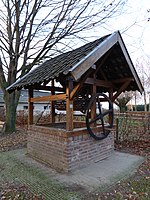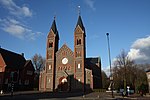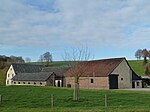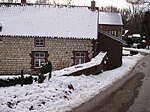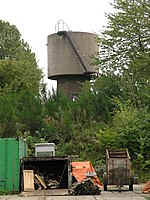St. Benedictusberg Abbey
Benedictine monasteries in the NetherlandsChristian monasteries in Limburg (Netherlands)Christian organizations established in 1922Rijksmonuments in LimburgVaals

St. Benedictusberg Abbey, also Mamelis Abbey, is a Benedictine monastery established in 1922 in Mamelis, a hamlet which administratively falls within Vaals, Netherlands. It is a rijksmonument. Since 1951 St. Benedictusberg has belonged to the Solesmes Congregation, which is part of the Benedictine monastic confederation.
Excerpt from the Wikipedia article St. Benedictusberg Abbey (License: CC BY-SA 3.0, Authors, Images).St. Benedictusberg Abbey
Mamelis, Vaals
Geographical coordinates (GPS) Address Website External links Nearby Places Show on map
Geographical coordinates (GPS)
| Latitude | Longitude |
|---|---|
| N 50.801388888889 ° | E 5.9725 ° |
Address
Abdij Sint-Benedictusberg
Mamelis
6295 NA Vaals
Limburg, Netherlands
Open on Google Maps


